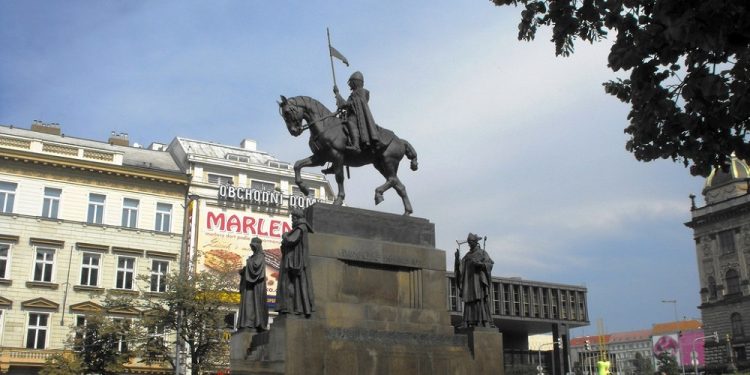
St. Wenceslas Day
St. Wenceslas Day is the feast day of Saint Wenceslas, the patron saint of the Czech Republic, and it commemorates his death in the 10th century. It’s also Czech Statehood Day and is a public holiday. As a national holiday, it’s a day off for the general public, and most non-essential government offices, schools, and businesses are closed.
It’s also a day that not only features religious services for the faithful but also beer and market celebrations across the country. Other events that happen on this day include communal meals and celebrations around the St. Wenceslas Statue.
The History of St. Wenceslas Day in the Czech Republic
Wenceslas was born in 907 near Prague and was the son of the Bohemian Duke. In 921, his father died, and he ruled in his father’s place starting at the age of 15 in 922. During his rule, he supported the church and worked towards making peace between Bohemia and Germany.
Unfortunately, his policies weren’t popular with some people, and they created enemies within his own court. His brother Boleslav invited him to a church consecration on the morning of September 28, 935. On his way to mass, Boleslav attacked Wenceslas, and he was killed.
Boleslav would assume power in Bohemia and would rule for almost five decades. Towards the end of his life, Boleslav is said to have felt remorse over his betrayal of his brother, so he had the first church devoted to Saint Wenceslas built in Prague in 972.
The feast day of this Czech patron saint quickly became an important day for Roman Catholics, but it was only made an official national holiday in 2000.
Observing St. Wenceslas Day in the Czech Republic
This holiday begins with a mass in the church of St. Wenceslas in Stara Boleslav. During this event, St. Wenceslas’ relics are exhibited to the public. One of these relics is St. Wenceslas’ skull, which is placed on a royal crown and symbolizes that he is the hereditary prince of the Czech lands.








